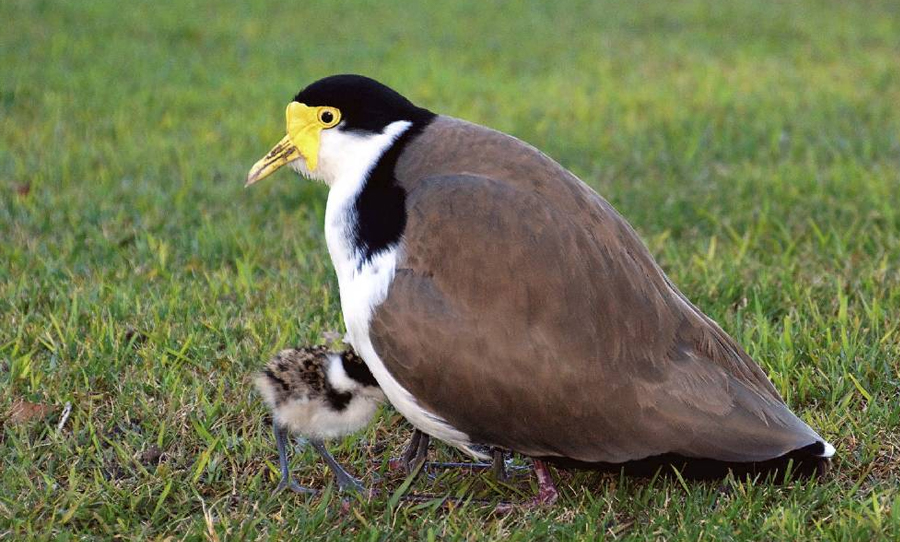Nothing can ruin a spring day quite like an encounter with a plover. But are the sharp-elbowed birds actually as bloodthirsty as we once thought?
Forget the deadly snakes, lethal spiders, and toxic politicians, there are very few things that Australians fear more than plovers. Known for their unorthodox habitats, bloodcurdling screams, terrifying elbow spikes, and tendency to annihilate anyone who challenges them, locals often steer clear when they see the yellow-faced birds emerge in their local park.
However, in the biggest plot twist of them all, scientists are now revealing that plovers are actually complex creatures whose deep family values have landed them with their infamous reputation. We investigate.

What is a plover?
The plover, or Masked Lapwing, is quite an elegant bird, known to infest the entirety of Australia. You can usually find them in parkland, farmland, and on the shores of swamps and lakes. For most city-dwellers, these weaponised creatures can be found on literally any flat, grassy surface, and sometimes even in the roofs of homes.
Although initially appearing harmless, small and cute even, the plovers reach another level of savagery when a nest or hatchlings are involved. They will not hesitate to swoop, chase, or scream any foe who crosses their path. They’ve even mastered the art of deception: pretending to have a broken wing to lure their victims closer, only to then launch a surprise attack.
While these incidents are very often bluffs, being the sneaky devils that they are, they are nonetheless terrifying. When approaching a plover, WIRES advises that you walk as far away from the birds as possible and never make eye contact. Protective headwear is also recommended.
Why do they always live in such shit places?
It is very common narrative for plovers to terrorise footy pitches, school playgrounds, and local parks. Turns out the little guys just love those wide-open spaces for that 360-degree view of potential predators.
Due to this, Tasmanian bird expert Don explains that the plovers really made use of European colonisation. “When Europeans came, we created these vast open spaces like paddocks and parks. This suited the masked lapwing perfectly and they just laid claim to it,” Knowler told ABC Radio Hobart.
“They are very happy with the things we’ve created.” A very hot take here from a bird that’s known to peck at its own reflection for hours on end.
The plot twist
Knived elbows, piercing screams, and a licence to kill (not really), plovers are more aggressive than Sydney drivers stuck in peak-hour. But here’s the kicker, they only do it to protect their babies. In fact *grabs tissues*, plovers are known to linger around their habitat or nest long after the death of a mate.
“They feel grief, they feel sadness,” Knowler casually drops. “They have empathy for other injured birds and will flock around to protect it. They certainly do have feelings.”
*sniffs* We’re not crying, you are.
Thoughts, feelings, concerns
“They’re not actually dangerous, it’s just a bluster,” Knowler concludes, alleviating all our fears of the once-dreaded birds. Old mate (Knowler) then wraps up his interview with this nail in the coffin fact: plovers can’t do much damage because their beaks are blunt, whereas magpies’ beaks can actually penetrate flesh.
“They’re not like magpies, which are dangerous,” he explains, making us feel just as terrified to leave the house.
Well, if we’ve learnt anything today it’s that spur-winged plovers are misunderstood sweethearts who just love their families too much: kind of like the old guy from Up. Magpies, on the other hand, are the true enemy. Proceed with caution this swooping-season.
Support Australian Wildlife by heading over to WIRES



